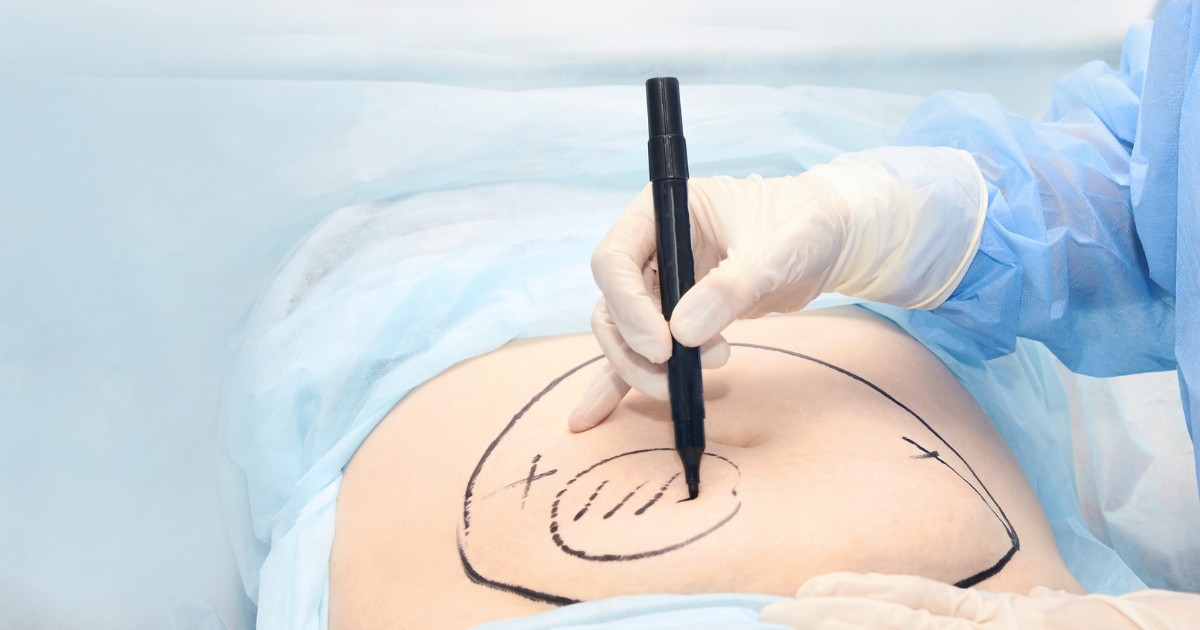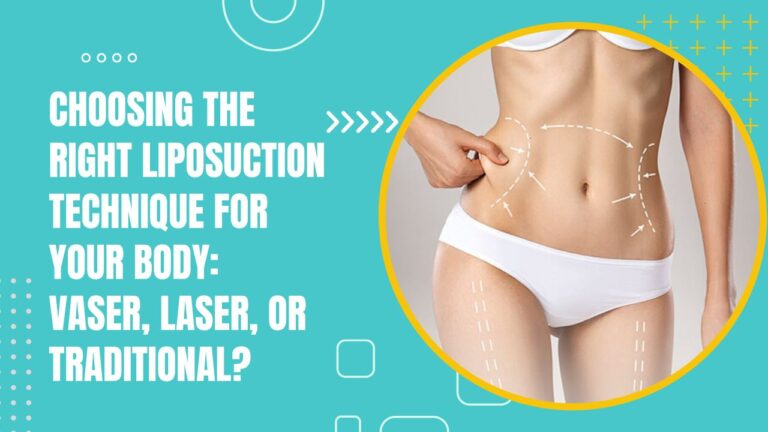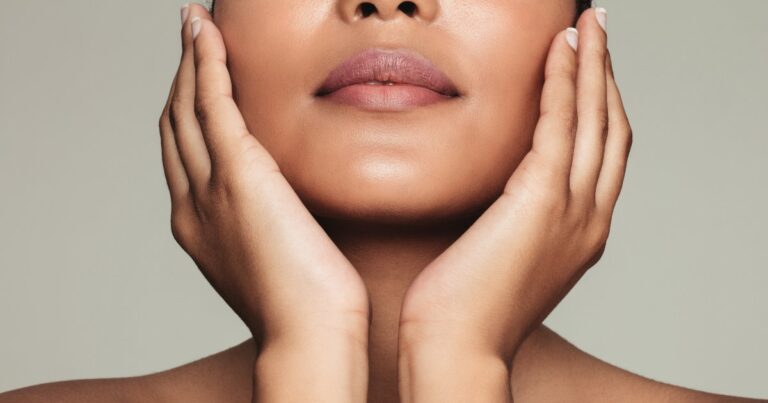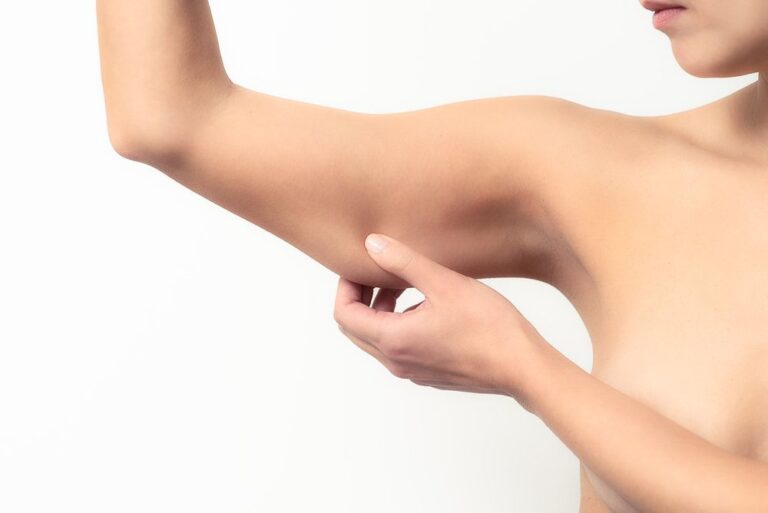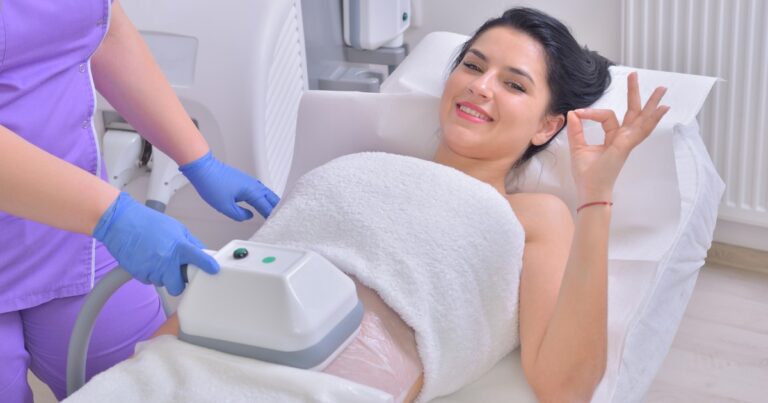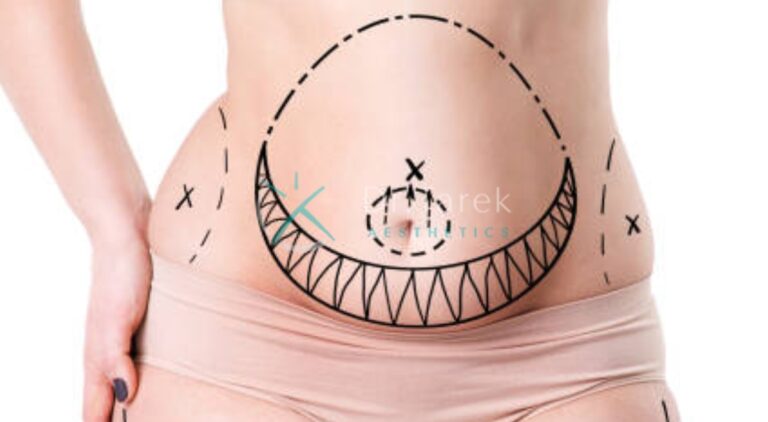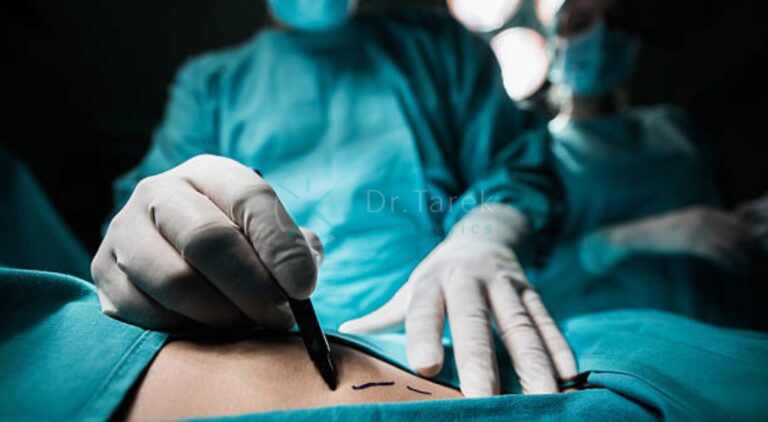Liposuction in Dubai, often associated with cosmetic enhancements, also holds promise when treating specific medical ailments. The growing interest in Liposuction treat medical conditions demonstrates its increasing importance in healthcare.
This article aims to clarify the therapeutic facets of liposuction, emphasising its crucial role in specific medical solutions.
Liposuction Treat Medical Conditions
Liposuction is not only a cosmetic procedure but can also be integral to treatment for specific medical conditions. Here are some key points:
- Lymphoedema Management: Liposuction can reduce swelling and pain for patients suffering from chronic lymphoedema.
- Lipoma Removal: Liposuction for lipomas is a common technique to excise benign fatty tumours.
- Lipodystrophy Syndrome: This condition, characterised by abnormal fat distribution in the body, can sometimes be mitigated through liposuction.
Liposuction and Lymphedema: A Symptomatic Relief
Liposuction is a recognised treatment for lymphedema, a condition characterised by persistent swelling due to the accumulation of lymphatic fluid. The procedure facilitates the removal of excess fluid and fat, offering enduring relief to patients and improving both quality of life and mobility.
Book A Consultation With Dr Tarek Bayazid
Top-rated Plastic Surgeon For Liposuction in Dubai
Installment Plan Available
| Aspect | Detail |
| Condition | Lymphoedema |
| Primary Benefit | Reduction of Swelling and Discomfort |
| Secondary Benefit | Improved Limb Mobility |
| Procedure Type | Surgical, involving the removal of excess lymphatic fluid |
| Recovery Period | Variable: depends on individual patient response and extent of surgery |
| Potential Risks | Infection, scarring, and temporary numbness |
This table summarises the role of liposuction in providing symptomatic relief for lymphoedema, highlighting the primary benefits, the nature of the procedure, and the potential risks involved.
The Role of Liposuction in Treating Medical Conditions like Lipomas
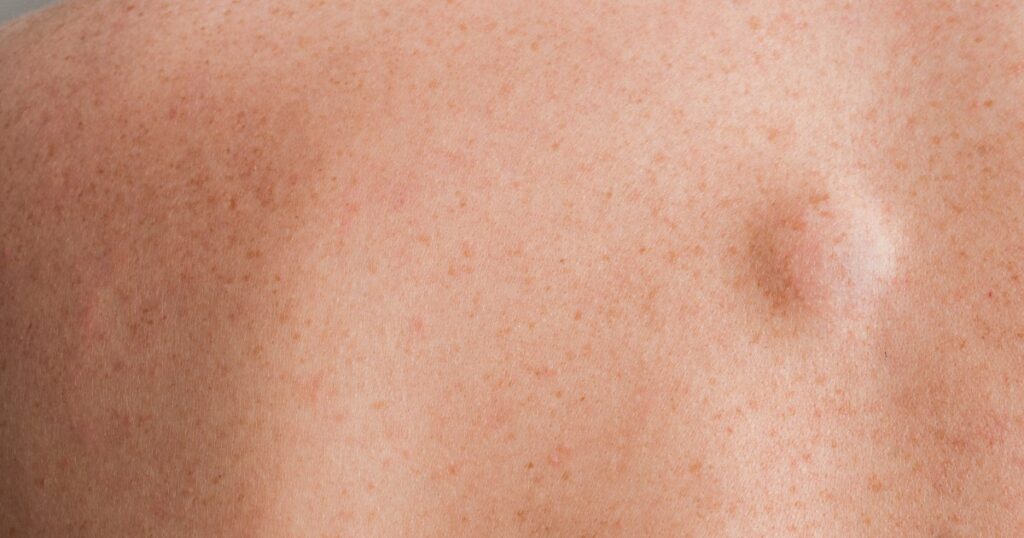
When it comes to lipoma treatment, liposuction stands as a multifaceted solution. It offers a less invasive alternative to surgical excision, minimising both scarring and recovery duration, allowing for optimal lipoma removal with minimal disruption to surrounding tissues.
| Aspect | Detail |
| Condition | Lipomas |
| Objective | Removal of benign fatty tumours |
| Technique | Minimally invasive liposuction |
| Anaesthesia | Local or general, depending on the size and location of the lipoma |
| Recovery Time | Usually short, patients can often return to work within days |
| Complication Risks | Minimal; may include bruising, infection, or contour irregularities |
This table outlines how liposuction serves as a minimally invasive technique for the removal of lipomas, detailing the process and recovery expectations alongside potential risks.
Lipodystrophy and Liposuction: A Potential Solution?
Lipodystrophy, characterised by abnormal or degenerative conditions of the body’s fatty tissue, can be addressed through liposuction. This treatment may offer relief and aesthetic improvement by removing fat from affected areas.
- Targeted Fat Reduction: Liposuction can help sculpt the body by removing excess fat from specific areas.
- Improvement in Contour: Patients often experience an improved body contour and symmetry post-procedure.
- Quality of Life Enhancement: Successful liposuction may enhance the patient’s quality of life by alleviating physical discomfort and psychological distress associated with the condition.
The Benefits and Limitations of Liposuction in Medical Treatment
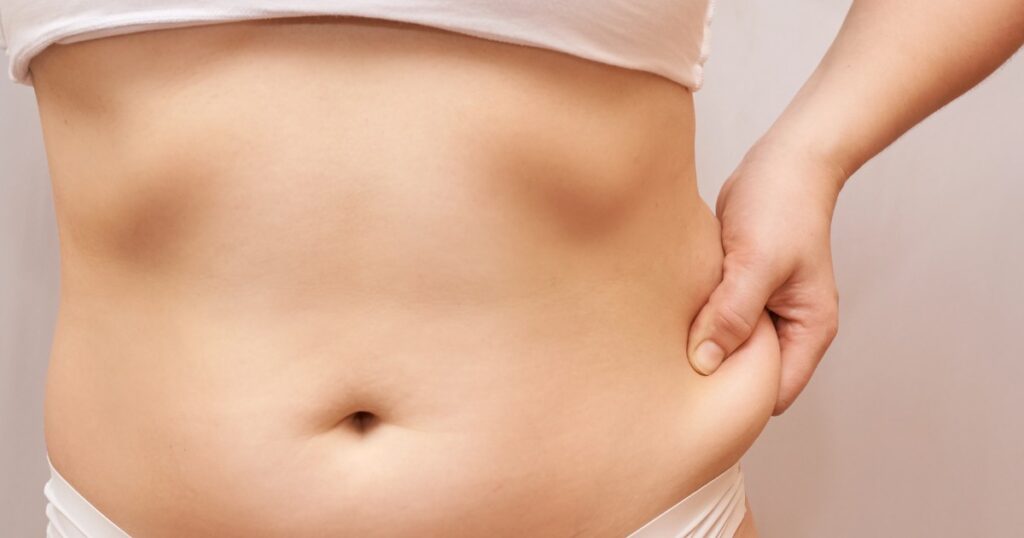
Acknowledging the advantages of liposuction, as well as its inherent limitations, is vital in promoting informed and realistic expectations. Liposuction provides symptomatic and aesthetic relief for specific conditions, offering considerable benefits in targeted fat reduction and body contouring.
However, it is not a panacea for obesity or a substitute for extensive weight loss, necessitating a thorough understanding of its capacities and appropriate applications.
| Benefits | Limitations |
| Targeted Fat Removal | Not a Weight-Loss Solution |
| Precisely removes fat from specific areas. | Not effective for general weight reduction. |
| Symptom Relief for Conditions | Limited Impact on Obesity-Related Issues |
| It can alleviate symptoms of lipodystrophy. | It does not address underlying metabolic issues |
| Quick Recovery Times | Potential for Complications |
| Most patients recover swiftly from the procedure. | Risks include infection and scarring. |
| Cosmetic Enhancement | Temporary Results |
| Improves body contour and appearance. | Fat can return if the lifestyle is not modified. |
The table above delineates the pros and cons of using liposuction in the context of medical treatments, emphasising its specialised use in fat removal and symptom alleviation while also acknowledging its limitations as a non-comprehensive solution for weight management and its associated risks.
Addressing Concerns: Risks and Side Effects of Liposuction
It is imperative to consider the inherent risk factors and potential liposuction complications for well-informed decision-making. While minor side effects such as bruising and numbness are common, severe complications like infections, though rare, must also be acknowledged and understood for optimal postoperative care adherence.
| Risks | Side Effects |
| Infection | Bruising |
| Possible post-operative complications. | Common, typically temporary. |
| Bleeding | Swelling |
| It may occur during or after surgery. | Part of the healing process. |
| Anaesthesia Complications | Numbness |
| Related to sedation and can be severe. | Usually, it resolves over time. |
| Fat Embolism | Pain |
| A rare but critical condition. | It can be managed with medication. |
| Contour Irregularities | Scarring |
| Uneven fat removal or skin elasticity. | Generally minimal with proper care. |
This table presents an overview of potential risks and common side effects associated with liposuction, offering a straightforward summary for those considering the procedure to understand what may be involved.
Exploring Alternative Treatments to Liposuction
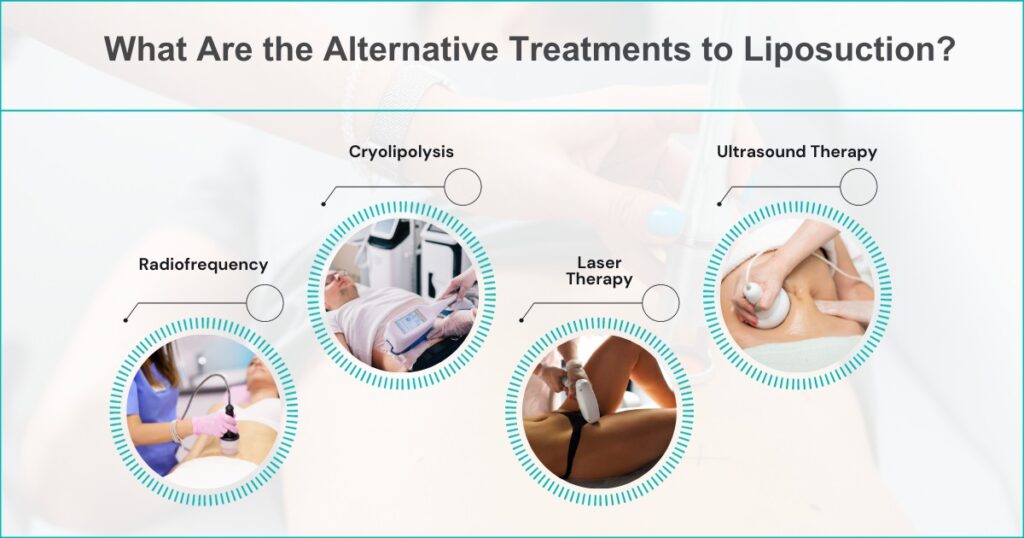
Exploring alternatives to different types of liposuction is crucial for individuals seeking non-surgical fat reduction methods or treatments with fewer risks and side effects.
- Cryolipolysis: A non-invasive procedure that freezes and breaks down fat cells.
- Laser Therapy: Uses concentrated light to disrupt fat cells, often with less recovery time.
- Radiofrequency: Heats and reduces fat without damaging the overlying skin.
- Ultrasound Therapy: Employs sound waves to target and eliminate fat in specific areas.
- Diet and Exercise: The cornerstone of fat reduction and overall health improvement, though results vary significantly between individuals.
Liposuction transcends mere cosmetic purposes. Individuals facing particular health challenges can benefit from Liposuction for Medical Conditions, which offers hope and effective therapeutic interventions. Modern medicine must recognise its importance despite its multifaceted capabilities.
Dr Tarek Bayazid, one of Dubai’s leading plastic surgeons specialising in body contouring as well as facial rejuvenation, offers an array of non-surgical and surgical aesthetic procedures. Renowned for his advanced approach, particularly in the “composite deep plane facelift”, Dr Tarek is committed to delivering natural-looking results emphasising patient safety and a minimally invasive technique. His international training and membership in prestigious societies, like ISAPS and MAFAC, assure his patients of treatment at the pinnacle of plastic surgery innovation.
To explore your options and craft a personalised treatment plan with Dr Tarek Bayazid, book a consultation today and take the first step towards a refined, natural aesthetic with one of the foremost experts in the field. Discover the transformative benefits of our advanced liposuction chin in Dubai, where Dr. Tarek Bayazid employs state-of-the-art techniques to sculpt and redefine your facial contours with precision and expertise
Frequently Asked Questions (FAQs) About Liposuction
What is liposuction, and how does it work?
Liposuction is a surgical procedure to remove unwanted fat deposits from specific body areas. It involves using a cannula and a suction device to extract fat, enhancing body contour and shape.
Is liposuction solely for cosmetic purposes?
While liposuction is popularly known for cosmetic enhancements, it also serves therapeutic purposes. It can treat medical conditions like lymphedema, lipomas, and lipodystrophy.
Are the results of liposuction permanent?
The fat cells removed during liposuction are permanently eliminated. However, patients need to maintain a stable weight post-procedure to ensure lasting results, as gaining significant weight can lead to fat accumulation in untreated areas.
What are the risks associated with liposuction?
Liposuction, like any surgical procedure, carries risks. Common side effects include swelling, bruising, and numbness. More severe complications, though rare, can include infection, embolism, and seroma.
How long is the recovery period after undergoing liposuction?
Typically, most patients can return to work within a week post-liposuction. However, it’s recommended to avoid strenuous activities for at least four to six weeks. Recovery duration can vary based on the extent of the procedure and individual healing rates.
